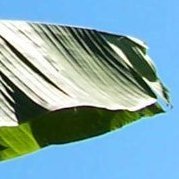-
Recently Browsing 0 members
- No registered users viewing this page.
Announcements
-
Topics
-
Latest posts...
-
2
Any funny stuff going on at the airport when leaving Thailand in regards to Taxes?
There are no questions about by immigration when leaving Thailand.- 1
-

-
2
Any funny stuff going on at the airport when leaving Thailand in regards to Taxes?
That would be a nightmare. Provide a copy of your tax return or we can't stamp you out... -
30
PM Paetongtarn Seeks Extension on Asset Declaration
I think her daddy has these abilities. -
173
Why Kamala Harris Lost: The Challenges of a Complex Campaign
Hopefully the GOP wins the house as well, as this time it won't be a hostile house like the first time. The Dems and the liberal loonies need to be afraid, very afraid. With both the senate and house GOP Trump will be able to do things he was not able to achieve the first time. Is it too much to expect the end of wokeness and PC? -
6,543
-
173
Why Kamala Harris Lost: The Challenges of a Complex Campaign
Trump won, so suck on that, loser -
7
Elon Musk's X Woes and the Impending Impact on Possible Share Sale Liquidating Tesla Shares
All the idiots that said Musk would never get any value or his monies worth out of X. He is know not only the richest man in the world but the most powerful private individual on the planet. -
0
THAILAND LIVE Thailand Live Monday 11 November 2024
Nine British tourists arrested for reckless driving in Phuket Nine British tourists were detained in Phuket for disturbing the peace after riding their motorcycles recklessly and causing a public nuisance that led to numerous complaints from residents and tourists. Picture courtesy: Thai Post Full story: https://aseannow.com/topic/1343120-nine-british-tourists-arrested-for-reckless-driving-in-phuket/
-
-
Popular in The Pub
.png.3b3332cc2256ad0edbc2fe9404feeef0.png.8488ab72b8bb2e508209bfe3211b6e08.png)








.thumb.jpg.07d3893e233f9af17b17b40cc153f571.jpg)
Recommended Posts
Create an account or sign in to comment
You need to be a member in order to leave a comment
Create an account
Sign up for a new account in our community. It's easy!
Register a new accountSign in
Already have an account? Sign in here.
Sign In Now